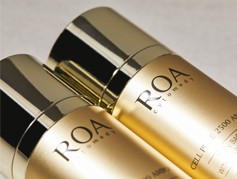
Title: How to Master Innovative Contouring and Highlighting Techniques
Mae Keesler
2024-10-26 17:23
2
0
본문
5. Contour Shading: Contour shading involves following the natural curves and contours of an object to create shading that emphasizes its three-dimensional form. This technique is often used in figure drawing and portraiture to enhance the volume and structure of the subject.
1. Hatching and Cross-Hatching: Hatching involves creating a series of parallel lines to build up value and texture in a drawing. Cross-hatching takes this technique a step further by adding more sets of lines that intersect each other, creating darker areas where the lines overlap.
Contouring and highlighting techniques have become increasingly popular in the beauty industry, thanks to their ability to enhance facial features and create a more sculpted, radiant look. While traditional contouring and highlighting methods involve using darker shades to create shadows and lighter shades to bring forward areas of the face, there are now innovative techniques that take these concepts to the next level. In this article, we will explore how you can master these innovative techniques to achieve a flawless contoured and highlighted look.
In conclusion, mastering innovative contouring and highlighting techniques can elevate your makeup game and help you achieve a flawless, sculpted look. Whether you prefer cream contouring, strobing, draping, or reverse contouring, experimenting with these techniques can help you discover new ways to enhance your natural features and create a customized makeup look that suits your style. Practice and patience are key when it comes to perfecting these techniques, so don't be afraid to get creative and have fun with your makeup!
1. **Choosing the Right Products**:
Before diving into contouring and highlighting, it’s crucial to select the right products. Opt for matte contour products that are a few shades darker than your natural skin tone. For highlighting, choose a luminous, light-reflecting formula to bring dimension to your face.
1. Balance is key: When using matte products, it's important to balance the matte finishes with some strategic shimmer or glow. For example, if you have a matte foundation, you can add a touch of highlighter to areas like the cheekbones and brow bones to add dimension and luminosity to the skin.
4. Reverse Contouring:
Reverse contouring is a technique that involves applying a lighter shade to the areas you would typically contour and a darker shade to the areas you would typically highlight. This technique helps create a more natural, subtle contour while still defining and sculpting the face. To master reverse contouring, select a concealer or foundation shade that is a few shades lighter than your natural skin tone to highlight areas such as the center of the forehead, under the eyes, and the center of the chin. Use a contour product that is slightly darker than your skin tone to sculpt the sides of the face, the jawline, and the perimeter of the forehead.
3. Draping:
Draping is a modern take on traditional blush application, where blush is used to contour and highlight the face simultaneously. To master draping, choose a blush shade that complements your skin tone and has a buildable formula for a customizable finish. Start by applying the blush to the apples of your cheeks and blending it upwards towards your temples to create a soft, sculpted effect. Draping can help add dimension to the face while giving you a healthy, flushed look.
3. Stippling: Stippling is a technique where small dots are applied in a pattern to create shading and texture. The density and spacing of the dots can be adjusted to create varying levels of value and detail.
8. **Practice Makes Perfect**:
Contouring and highlighting can be intimidating for beginners, but like any makeup skill, practice makes perfect. Take the time to experiment with different techniques and products to find what works best Hair growth strategies for textured hair your unique features.
2. Hydrating and Nourishing: Many natural setting sprays contain hydrating ingredients like aloe vera, glycerin, and hyaluronic acid, which help keep the skin moisturized and healthy. These sprays can also contain antioxidants and vitamins that nourish the skin and protect it from environmental damage.
Conclusion
Mastering the art of day-to-night makeup transitions is a valuable skill that allows you to effortlessly transform your look from casual daytime elegance to glamorous evening sophistication. By following the tips and techniques outlined in this guide and having the right products on hand, you can confidently navigate any transition and step out with confidence and style. Embrace your inner glamour and let your makeup be a reflection of your unique beauty, day and night.
2. Strobing:
Strobing is a highlighting technique that focuses on creating a dewy, luminous glow on the high points of the face. This technique involves using a shimmery highlighter to accentuate areas where light naturally hits the face, such as the cheekbones, brow bone, inner corners of the eyes, and the bridge of the nose. To master strobing, choose a highlighter that complements your skin tone and has a finely milled texture for a seamless application. Apply the highlighter to the desired areas using a small brush or your fingertips, and blend it out for a seamless, radiant finish.
1. Hatching and Cross-Hatching: Hatching involves creating a series of parallel lines to build up value and texture in a drawing. Cross-hatching takes this technique a step further by adding more sets of lines that intersect each other, creating darker areas where the lines overlap.
Contouring and highlighting techniques have become increasingly popular in the beauty industry, thanks to their ability to enhance facial features and create a more sculpted, radiant look. While traditional contouring and highlighting methods involve using darker shades to create shadows and lighter shades to bring forward areas of the face, there are now innovative techniques that take these concepts to the next level. In this article, we will explore how you can master these innovative techniques to achieve a flawless contoured and highlighted look.
In conclusion, mastering innovative contouring and highlighting techniques can elevate your makeup game and help you achieve a flawless, sculpted look. Whether you prefer cream contouring, strobing, draping, or reverse contouring, experimenting with these techniques can help you discover new ways to enhance your natural features and create a customized makeup look that suits your style. Practice and patience are key when it comes to perfecting these techniques, so don't be afraid to get creative and have fun with your makeup!
1. **Choosing the Right Products**:
Before diving into contouring and highlighting, it’s crucial to select the right products. Opt for matte contour products that are a few shades darker than your natural skin tone. For highlighting, choose a luminous, light-reflecting formula to bring dimension to your face.
1. Balance is key: When using matte products, it's important to balance the matte finishes with some strategic shimmer or glow. For example, if you have a matte foundation, you can add a touch of highlighter to areas like the cheekbones and brow bones to add dimension and luminosity to the skin.
4. Reverse Contouring:
Reverse contouring is a technique that involves applying a lighter shade to the areas you would typically contour and a darker shade to the areas you would typically highlight. This technique helps create a more natural, subtle contour while still defining and sculpting the face. To master reverse contouring, select a concealer or foundation shade that is a few shades lighter than your natural skin tone to highlight areas such as the center of the forehead, under the eyes, and the center of the chin. Use a contour product that is slightly darker than your skin tone to sculpt the sides of the face, the jawline, and the perimeter of the forehead.
3. Draping:
Draping is a modern take on traditional blush application, where blush is used to contour and highlight the face simultaneously. To master draping, choose a blush shade that complements your skin tone and has a buildable formula for a customizable finish. Start by applying the blush to the apples of your cheeks and blending it upwards towards your temples to create a soft, sculpted effect. Draping can help add dimension to the face while giving you a healthy, flushed look.
3. Stippling: Stippling is a technique where small dots are applied in a pattern to create shading and texture. The density and spacing of the dots can be adjusted to create varying levels of value and detail.
8. **Practice Makes Perfect**:
Contouring and highlighting can be intimidating for beginners, but like any makeup skill, practice makes perfect. Take the time to experiment with different techniques and products to find what works best Hair growth strategies for textured hair your unique features.
2. Hydrating and Nourishing: Many natural setting sprays contain hydrating ingredients like aloe vera, glycerin, and hyaluronic acid, which help keep the skin moisturized and healthy. These sprays can also contain antioxidants and vitamins that nourish the skin and protect it from environmental damage.
Conclusion
Mastering the art of day-to-night makeup transitions is a valuable skill that allows you to effortlessly transform your look from casual daytime elegance to glamorous evening sophistication. By following the tips and techniques outlined in this guide and having the right products on hand, you can confidently navigate any transition and step out with confidence and style. Embrace your inner glamour and let your makeup be a reflection of your unique beauty, day and night.
2. Strobing:
Strobing is a highlighting technique that focuses on creating a dewy, luminous glow on the high points of the face. This technique involves using a shimmery highlighter to accentuate areas where light naturally hits the face, such as the cheekbones, brow bone, inner corners of the eyes, and the bridge of the nose. To master strobing, choose a highlighter that complements your skin tone and has a finely milled texture for a seamless application. Apply the highlighter to the desired areas using a small brush or your fingertips, and blend it out for a seamless, radiant finish.


